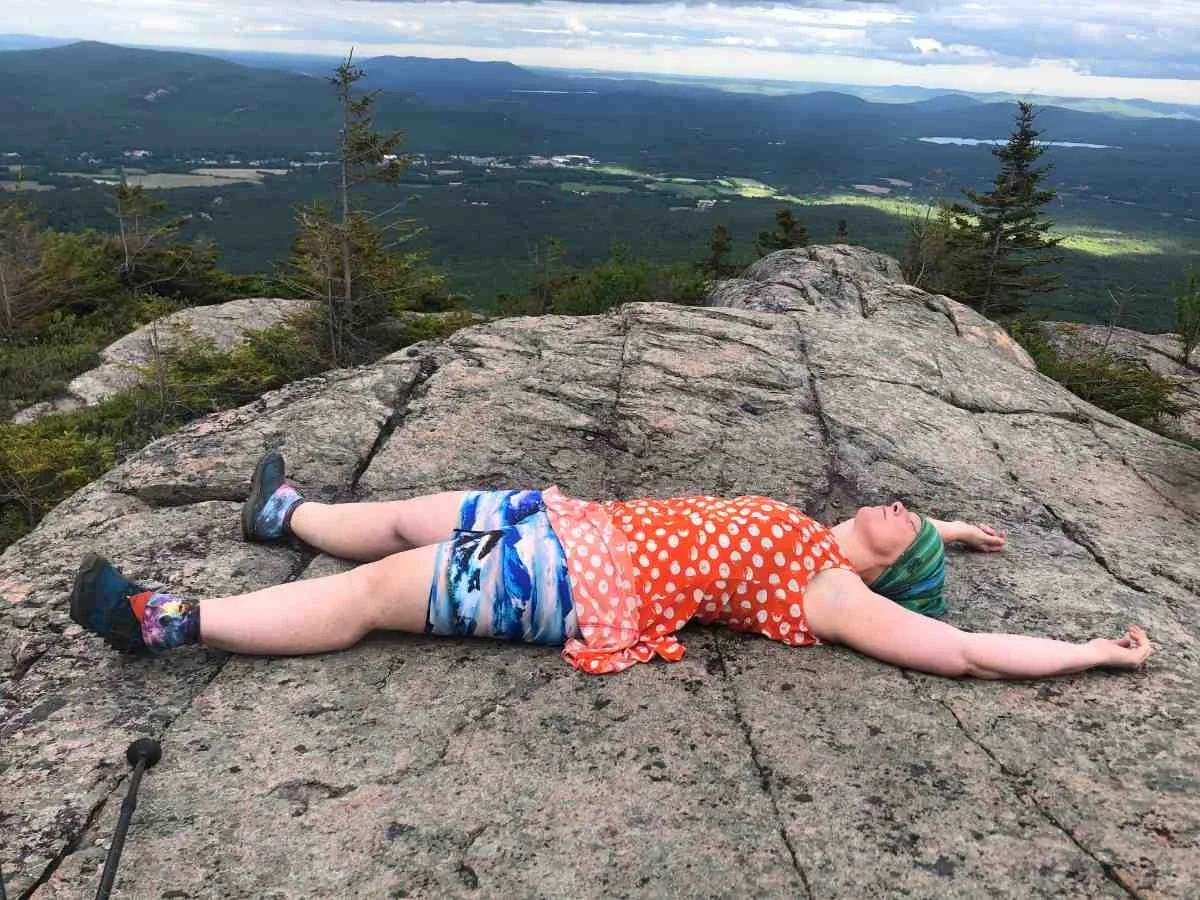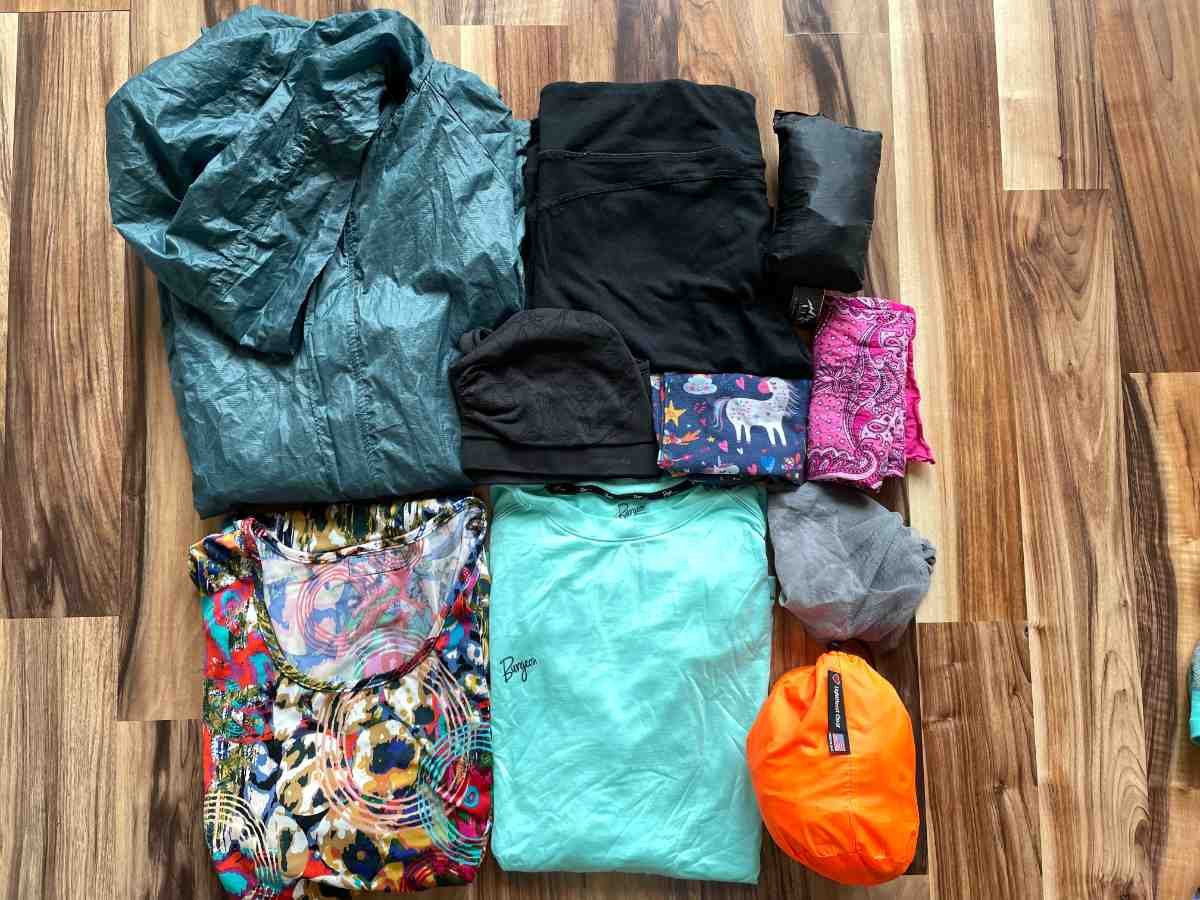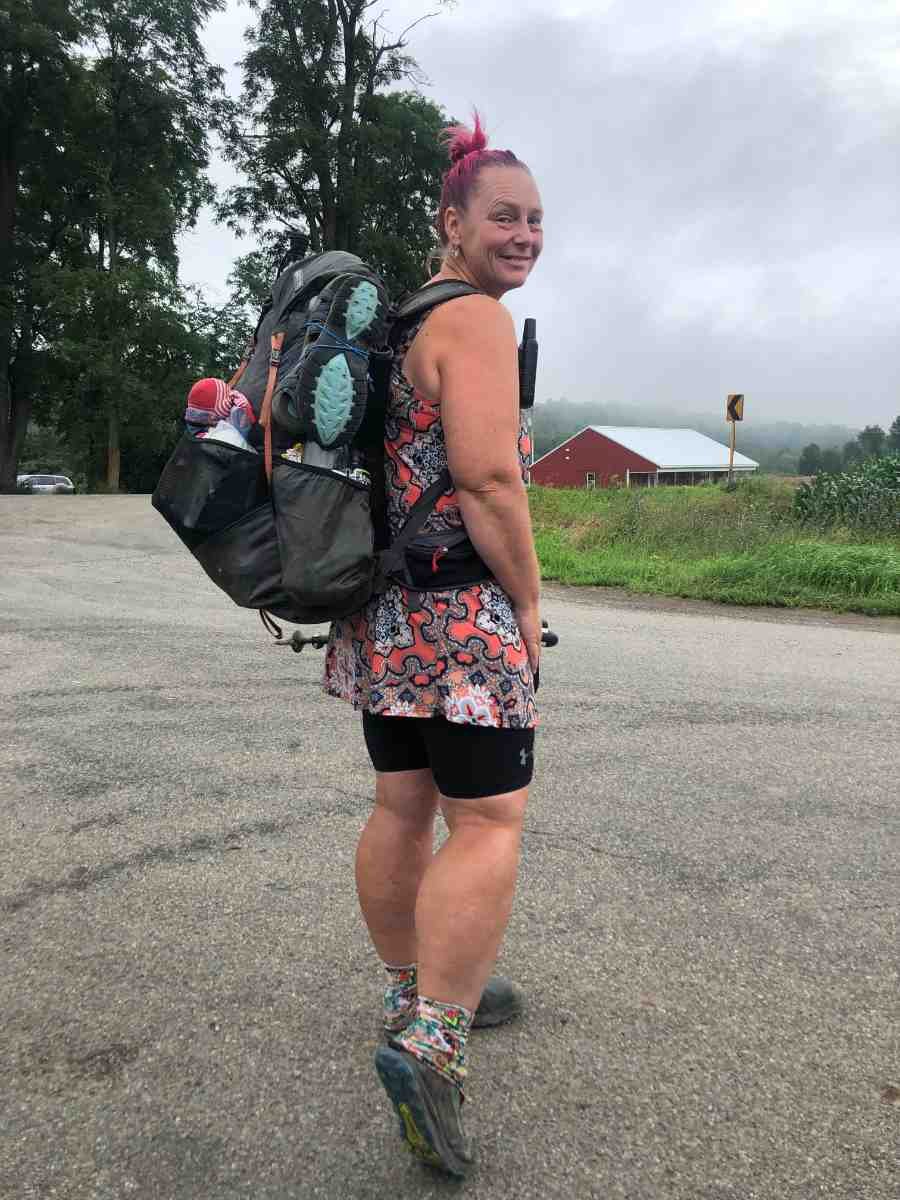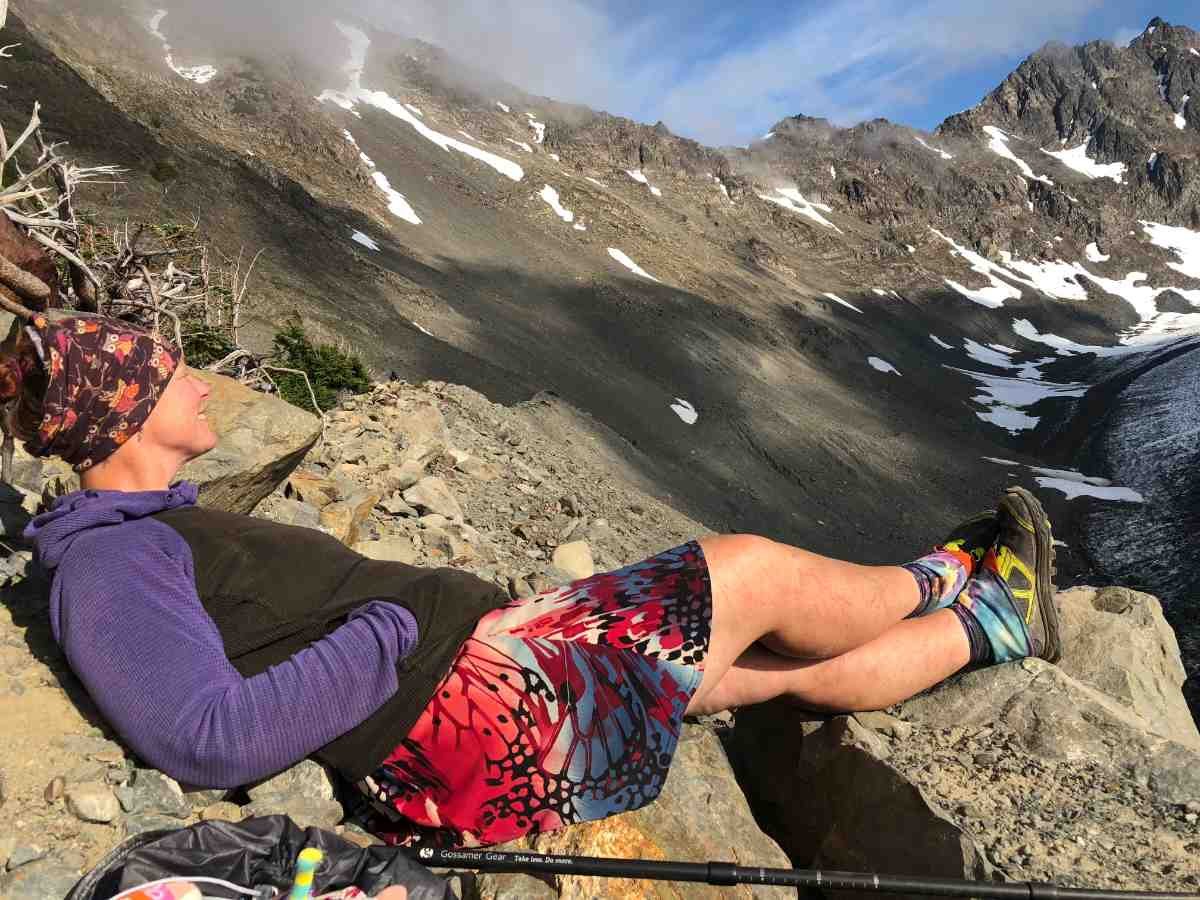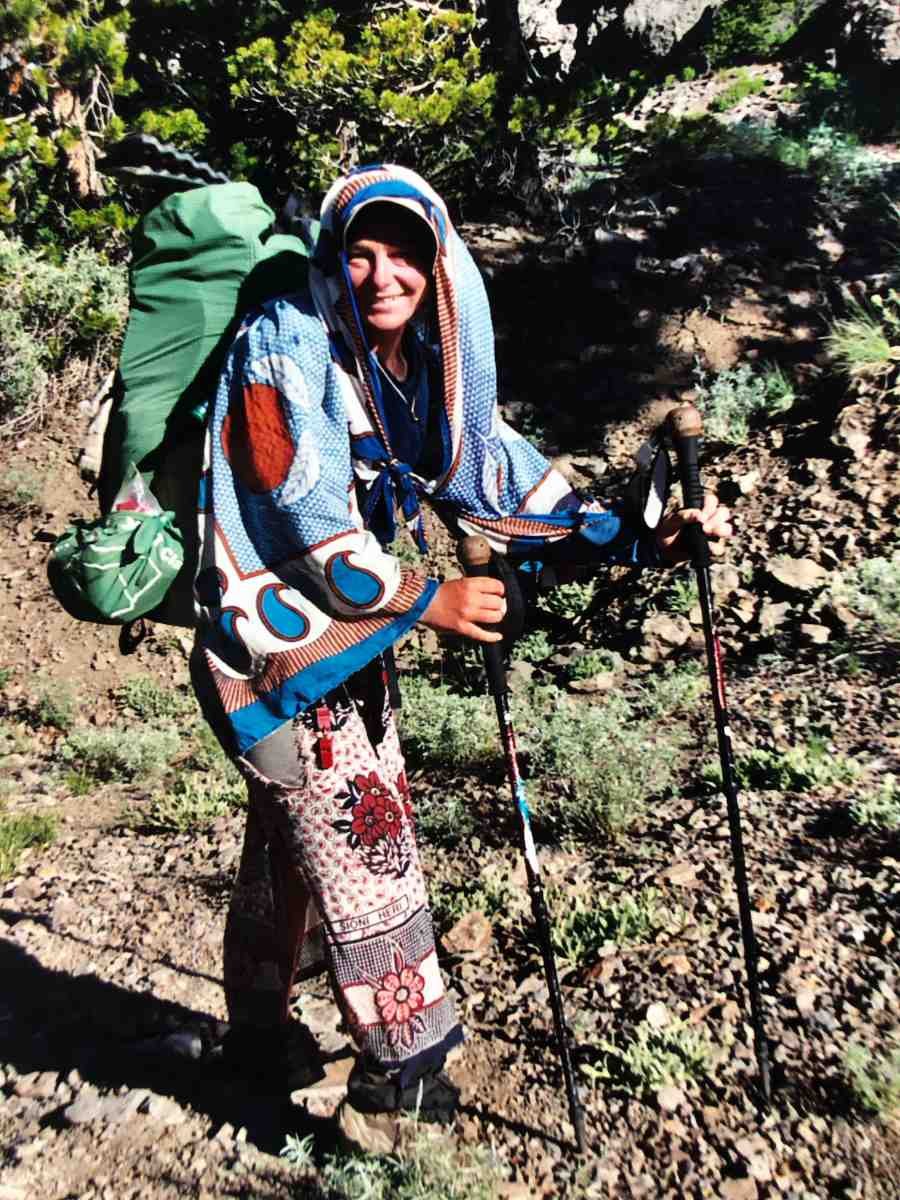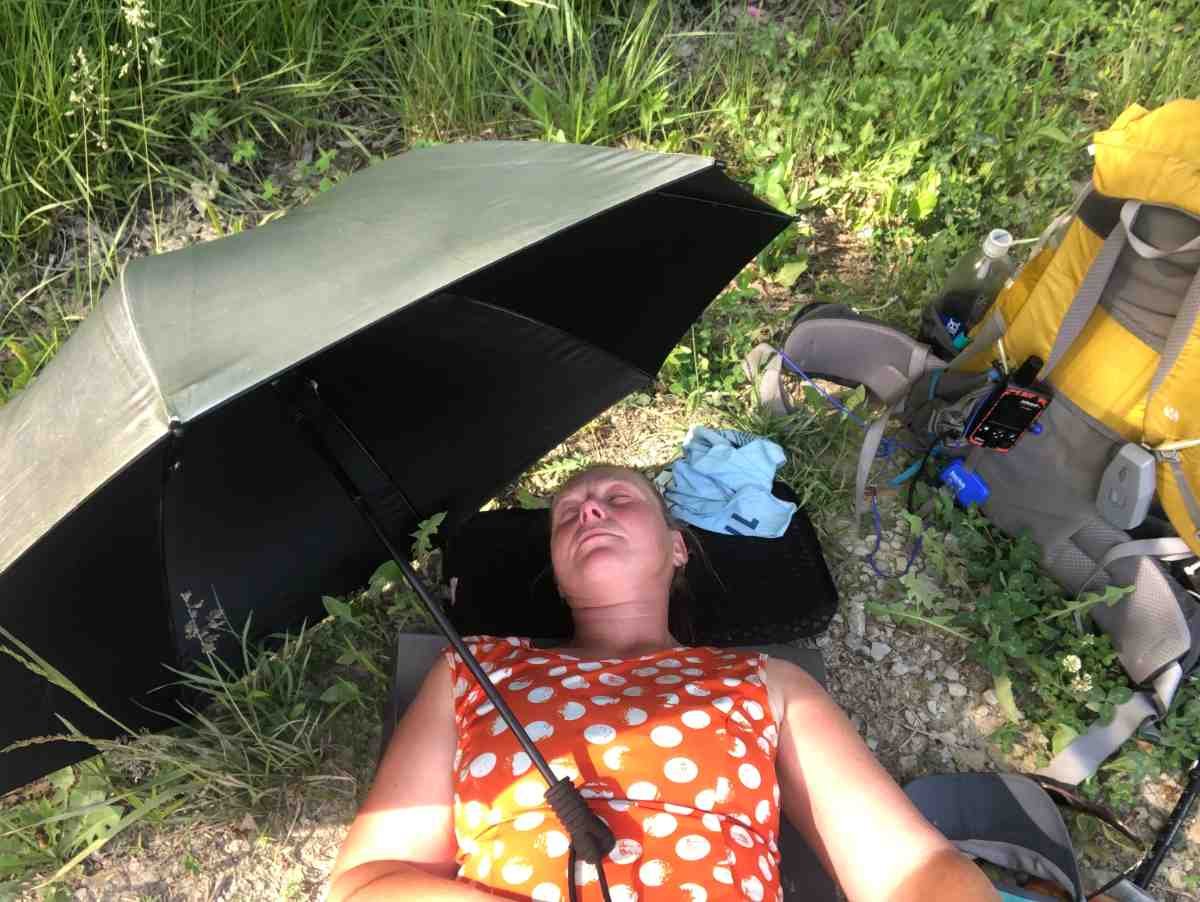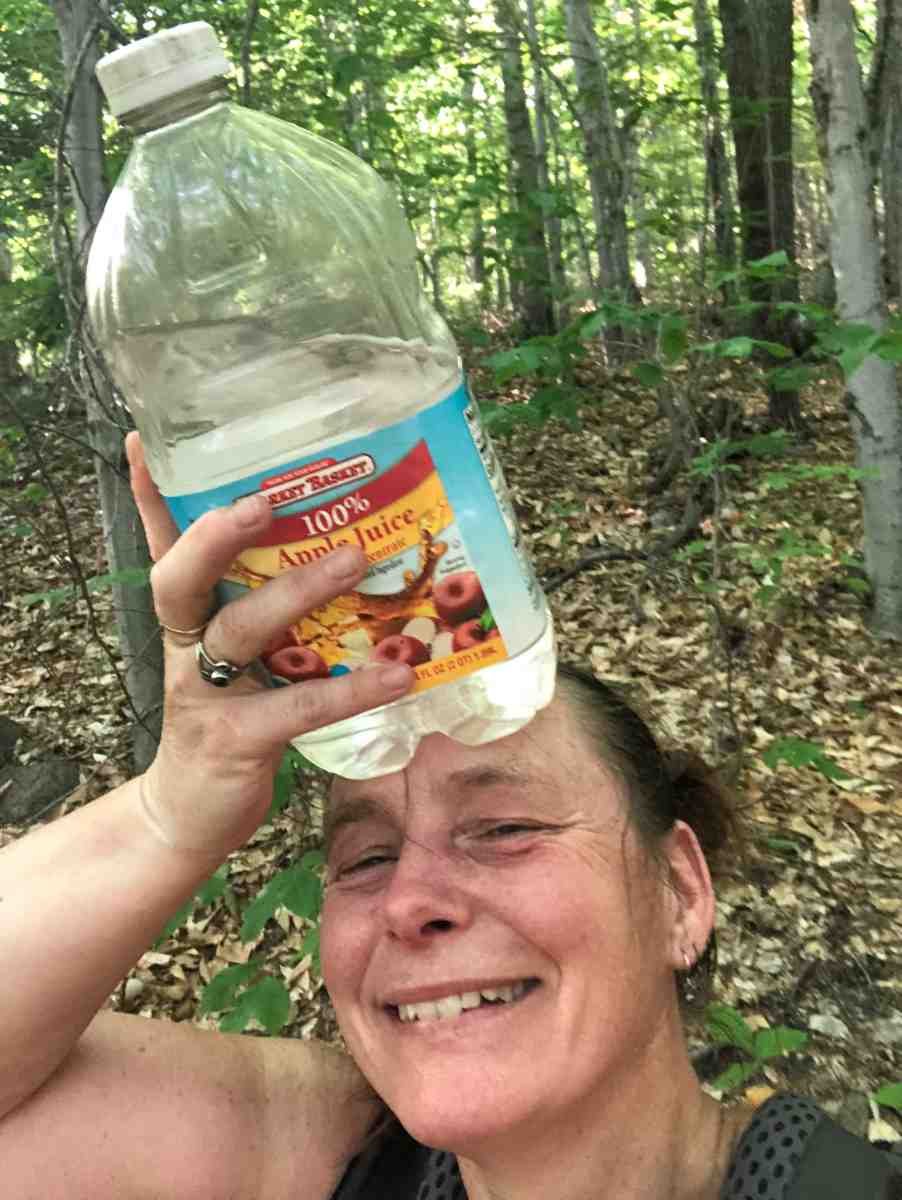What to wear hiking in summer: Essential gear for hot-weather hikes
summer hiking clothING RECOMMENDATIONS and hiking tips
Updated June 15th, 2025, updated with a new FAQ
Home > Gear Lists > Hiking
With the summer season in full swing, our summer hiking wardrobe comes out of the closet again. When hiking in warm and hot weather, hikers sweat more, and we’ll want hiking clothes that are lighter layers to keep us comfortable as conditions change. Whether you're day hiking in national parks, backpacking, or climbing mountains above treeline, here is my time-tested hiking clothing checklist and favorite tips for summer hikes.
This article delves into hiking clothes that work for me while hiking in warm conditions, both below and above treeline. In this story, I'll walk you through how to layer for summer hiking in warm and hot weather. I'm a mountain guide and was the first woman to hike all 11 National Scenic Trails. Here's what I advise my hiking clients to use and my trail-tested way of layering and tips for what to wear summer hiking and backpacking.
Looking for what to wear for winter hiking? See my guide to What to wear hiking in the winter
We create reader-supported, objective gear reviews independently selected by our editors. This story may contain affiliate links, which help fund our website. When you click on the links to purchase gear, we may get a commission — without costing you an extra cent. Thank you for supporting our work and mission of outdoor coverage for every body! Learn more.
Summer hiking clothes checklist
| SUMMER HIKING GEAR | OUR PICKS | MORE OPTIONS |
|---|---|---|
| Tops | ||
| Sun hoodie | Jolly Gear Triple Crown Button Down Women's Men's |
Best Sun Shirts |
| Baselayer top | Ibex Woolies Pro Tech Crew Women's Men's |
Best Base Layers |
| Hiking shirt | Patagonia Capilene Cool Daily Shirt Women's Men's |
Best Hiking Shirts for Women Best Hiking Shirts for Men |
| Hiking dress | LightheartGear Backpacking Dress | Best Hiking Skirts and Dresses |
The best materials for summer hiking
In hot weather, we are more likely to sweat, which will wet out our base layers. While in some hot dry climates cotton has its place, in general hikers want to stay away from it. Cotton has a tendency to absorb sweat and hold moisture while taking a long time to dry out. While this may be a desirable aspect in desert climates where a breeze combined with the wet fabric can help keep you cool, it is not a recommended fabric for most summer hikes or cold weather.
In general a breathable synthetic, quick-drying material such as polyester or a nylon blend is more comfortable and a safer choice. Besides possibly cooling you off too much, wet layers also can cause chafing and rashes, especially when you’re out for more than a day. Moisture-wicking layers will draw sweat away from your body and quick-drying materials will help you keep you dry.
Hiking on the Appalachian Trail in summer taught me that nothing ever dries out completely in high heat and humidity but at least synthetic loose fitting clothing is still somewhat comfortable to wear. Other materials I have found to be comfortable are silk and linen but neither of those fabrics are very strong and I would wear holes in them pretty quickly.
An example gear lay out of a summer hiking outfit, including layers for times when temperatures get chilly when hiking above treeline.
Upper Body Hiking Clothing
Hiking dresses
As with regular clothing we have choices on what to wear, but some may work better than others. While a tank top with spaghetti straps may be great for going to the beach, it won’t work as well for carrying a backpack. Bare skin under wet pack straps may create a rash or chafing, therefore it will be more comfortable to have a wider strap. I’ve worn summer dresses with thin straps from a thrift shop on some of my longer hikes and often ended up putting another piece of material under the straps for protection. My current dresses from Lightheart gear have wider straps specifically for that reason.
For more hiking dress options designed with functionality in mind, check out our guide to the Best Hiking Skirts and Dresses.
Short-sleeved hiking t-shirt
A short-sleeved t-shirt will avoid the shoulder chafing issue and offer some sun protection while covering the shoulders. This is one of the reasons I switched to a dress with sleeves for my Arizona hiking trip last spring. While I might remember to put sunscreen on my face and arms, I tend to neglect the back of my shoulders since it’s a much harder area to reach. A t-shirt takes care of that.
See our guides to Best Hiking Shirts for Men and Best Hiking Shirts for Women for more recommendations.
Long-sleeve sun shirt or sun hoodie
While on the subject of sleeves, many hikers nowadays choose to wear long sleeves and sun hoodies. The sun shirts offer sun protection and you won’t have to keep reapplying sunscreen. Many are made out of lightweight materials with fun colors and prints.
Jolly Gear even has button down long and short-sleeved shirts (with optional tight sun sleeves to complement the short-sleeved shirts).
The buttons give the option of leaving the front open for more airflow and was even adopted by my hardcore “no shirt on hot days” hiking partner. He liked the protection of the sleeves on top of the shoulders and not having to worry about sunburn on his back. He did end up cutting the hood off, but many hikers like these to protect their head and some like shirts with long sleeves with thumb holes so their hands are covered as well. See our guide to Best Sun Shirts for more recommendations.
Baselayers
When I’m out for a longer day hike or a backpacking trip I will still carry some extra layers. More often than not I won’t end up needing them during the day, but sometimes it cools off at night and it’s nice to have that extra layer while you’re hanging around camp or to sleep in. Or you want those sleeves to protect you from bugs! I will go for a thin base layer like a lightweight merino wool shirt or a nice thin tencel blend. I love my Ibex Woolies from years ago, and another shirt I like is the flume crew neck from Burgeon Outdoor.
See our guide to Best Base Layers for more recommendations.
Sports Bra
I prefer something light and quick drying. These kinds of sports bras may not have as much support but have the benefit of being less warm, which is great for summer hiking. A thin merino wool sports bra is nice. I've had some Ibex sports bras (now discontinued) that I like made of merino material. My current sports bra is a simple Patagonia synthetic.
See our guide to Best Sports Bras for AA to D Cups or Best Sports Bras for D+ Cups for more recommendations.
Just because it is summer doesn’t mean temperatures can’t get chilly above treeline. Here are some examples of summer hiking base layers, a thin hat and and windbreaker.
Warm layers
If I’m going out above treeline with variable weather conditions I may add a light fleece hoodie, such as the Ridge Merino Convict Hoodie.
Arlette Laan hiking in the summer in the rain on her thru-hike of the North Country Trail.
Wind jackets and rain jacket
To top it off I will add a light wind and/or water-resistant jacket. In the summer of my Pacific Crest Trail hike I did not carry any rain gear, but nowadays there are so many lightweight rain jacket options that I will add it to my backpack.
Look for a rain jacket with pit zips if you want more ventilation. I have one from LightHeart Gear with the longest pit zips I’ve ever seen.
Jackets without zips are lighter; wind jackets like the Patagonia Houdini (men's and women's) weigh virtually nothing but they will keep more warmth in during a possible summer deluge. Neither of these jackets may actually keep you dry but they keep in enough body heat to protect you in exposed terrain while you keep moving. See our guide to Best Men's Windbreaker Jackets and Best Women's Windbreaker Jackets for more recommendations.
Arlette Laan on the summit of Mt Washington in New Hampshire on the Presidential Traverse on the first day of summer.
Rain gear
If you’re planning to hang out in camp and sit still more you may want to upgrade to a heavier rain jacket or carry an umbrella. I love my umbrella from Gossamer Gear in combination with my pack cover hoodie from LightHeart Gear.
And here’s a tip: if you know you’ll get wet anyway but you know you’ll be sweating with a rain jacket on, just take your base layer off. The rain jacket will dry quickly and you’ll get to keep your base layer dry.
Some of these layers may seem like overkill for summer, but if you’re planning a trip above treeline where rain and wind make you vulnerable to hypothermia, I’d highly recommend carrying the extra protection. People die from exposure even in the summer months.
See our guide to Best Rain Pants for Hiking for more recommendations, especially some of the rain kilts which are best suited for summer hiking.
Shorts under a hiking dress as a summer hiking outfit can reduce chafe on hot days while also allowing for airflow.
Lower Body Hiking Clothing
Hiking shorts
When it comes to the lower body, hiking shorts will be the go-to for most hikers. A lightweight, quick-drying, looser-fit pair will be most comfortable. For men’s options, check out our Best Men’s Hiking Shorts, and for women, see our guide to the Best Women’s Hiking Shorts.
If you’re planning a long-distance hike, don’t miss our picks for the Best Thru-Hiking Shorts.
For those of us who deal with thigh rub, short shorts will not be the most comfortable option and you may want to look into longer ones or the short bike tights or short leggings. They will be hotter than loose-fit short shorts but will cut down on chafing. Be aware that the women’s bike shorts often are shorter than men’s, especially when you’re looking for the thinnest material like you find on Under Armour shorts.
A skirt or hiking dress can be a comfortable summer hiking outfit choice, even above treeline.
Skirt or hiking dress
Another option is to go with a skirt or hiking dress. I will still wear bike shorts underneath my dress to prevent thigh chafe, but the dress provides good airflow. To be honest, though, if it’s really hot I’ll pull up the skirt part of my dress and tuck it underneath my hipbelt. The looser the dress the less hot it is. I have on occasion changed out my regular hiking dresses for a cheap short flowy A-line thrift shop dress with less than ideal shoulder straps or a silk tunic, which was lovely but didn’t last.
Hiking pants
Even in the summer heat there are times though when you still might want a pair of longer hiking pants. If a trail is overgrown, the long pant legs will protect your legs from getting scratched up.
I recall a certain bushwhack with lots of stinging nettles where long pants would have been very beneficial, but I unfortunately did not have a pair. They will also protect you from mosquitos, black flies and ticks.
To protect yourself from ticks, it is key to tuck the pant legs into your hiking socks so they can’t crawl in. Especially helpful if you’ll be hiking the Ice Age Trail where even I, who never wear pants, put on a pair for a day or so. The longer pant legs also offer more sun protection than their shorter counterparts. I like the ElevenSkys pants with wide legs, giant pockets, and adjustments at the bottom to tighten around the ankle. And while zip off pants aren’t the most fashionable type of pants they sure are handy when it comes to making your pants more versatile.
See our guides to the Best Men's Hiking Pants and Best Women's Hiking Pants for more recommendations.
Long johns
I usually don’t carry long pants, but for longer summer backpacking trips I will throw a thin pair of Ibex Pro-tech woolies (men's and women's) or a thin synthetic pair of long johns in my pack. I might also wear them while sleeping if I want to push my limits with a lighter sleeping bag.
See our guide to Best Women’s Long Underwear or Best Men’s Long Underwear for more recommendations.
Arlette Laan hiking in Arizona wearing hiking sandals and a hiking skirt.
Footwear
Trail runners or hiking shoes
When it comes to footwear I recommend looking for hiking boots or hiking shoes that are lightweight and breathable. While many hikers may be tempted by traditional hiking boots, waterproof boots and shoes are often warmer and less breathable so I would stay away from those. Hot sweaty feet will cause moisture which can cause friction and blisters. Heat may also cause your feet to swell, so you might want to size up one half to a full size in shoes, or at least loosen your laces more.
Good lightweight options include lightweight hiking boots.
Many hikers choose to use a trail running shoe instead of hiking shoe for various reasons. See our guides to the Best Men's Trail Running Shoes and Best Women's Trail Running Shoes for more recommendations.
Close up of Arlette Laan’s hiking sandals and hiking socks for warm and hot weather hiking.
Hiking sandals
More and more you see people hike in sandals, and I am one of them. They allow my feet to breathe and can be a bit more roomy as is the case with my KEEN sandals. If you will be on a more rugged trail it is a good idea to pick a sandal with toe protection and a sole with more grip, but if you’re on a trail with good tread like the Pacific Crest Trail you might be fine with a Teva sandal or some of those minimalist sandals like the Xero brand. When you go minimal just be sure to train your feet so they are strong enough to handle the miles – and remember that if you're backpacking or carrying a heavier pack, you'll want more support, too.
Hiking socks
While you can certainly hike without socks, especially when using sandals, I still recommend wearing some. My favorites for summer are toe socks since they help prevent blisters between my toes. You can choose merino wool socks or synthetic socks, most hikers will stay way from cotton socks.
See our guide to the Best Hiking Sock for more recommendations.
Arlette Laan’s headwear for thru-hiking the North Country Trail in the summer.
Headwear
Sun hat
With the summer sun beating down on you, you’ll want some head protection. For hiking in the desert and in exposed terrain I recommend a sun hat with a wide brim all round. It will give you the most protection around your ears, neck, and face. Sunday Afternoons and Outdoor Research have some excellent lightweight options.
I personally tend to find hats too warm and will wear a visor (Sunday Afternoons makes a foldable one). I often supplement with an umbrella for extra shade or will add a cotton bandanna to shield my neck and ears if needed. Ball caps with mesh on the side are also a decent option.
See our sun protection page for more ways to protect yourself from the sun while outdoors.
Sunglasses
Good sunglasses are a must with the bright sun. I look for ones with broader sides to shield from the sun getting into my eyes from the side. I often pick them up in small convenience stores at gas stations since I tend to break them but the more expensive glasses probably have better quality lenses.
Neck cooling gaiters
Some people like to wear little cooling neck gaiters. I often carry a cotton bandanna and will dip that in a stream and hang it around my neck or drape it over my head.
Arlette Laan hiking above treeline in the summer in the White Mountains of New Hampshire.
Warm hat and gloves
You won't need them often during the summer, but I carry thin gloves and a thin hat for chillier weather when traveling above tree line during the summer.
Arlette Laan’s full gear lay out for summer hiking including hiking outfit and backpacking gear.
Other Summer Hiking Essentials
Hydration pack or water bladder
A hydration pack or water bladder is a nice way to carry water inside your pack while still being able to sip without taking your pack off. They are great for day hiking.
For multi day hiking I would recommend downsizing to a one liter bladder and keep more in bottles. The reason being that it’s hard to refill the bladder while the rest of your gear is pressing against it, and more importantly it’s harder to gauge how much water you have been drinking and how much is still left.
A one liter bladder could ride in the top of the pack or a side pocket and can easily be refilled with the bottles you are carrying.
When it’s hot and humid, carry more than you think you need. It’s quite possible you’ll sweat more than you anticipate and you may even want to dunk some of the water on your head to cool off. Although it's aimed at runners, our article on How to Stay Hydrated on a Trail Run has good tips that apply to hikers.
Water filter
When you know there is plenty of water along the way, you can save yourself some weight and carry a water filter so you can replenish your drinking water along the way. I like the Sawyer water filter (the regular size since the small has much slower flow).
See our guide to Best Water Filters and Purifiers for Backpackers for more recommendations.
Electrolytes
A good way to replace the salts you lose while sweating is adding electrolytes to your water. I like the strawberry lemonade ones from NUUN). See our guide to Best Electrolyte Powder for more recommendations.
Squirt bottle or water bottle
A really effective way of cooling down is using a squirt bottle with water in it. But honestly I just fill up one of my water bottles and dump the whole thing over my head. It can be a bit of a shock, but immediately drops my body temperature. Wetting your shirt in a stream and putting it back on takes some courage but is also very effective. You can see some of the options in our Best Water Bottles guide or consider re-using a so-called “single use” water bottle. A collapsible water bottle will be the lightest but if you are out on a hot day hike, sometimes there is nothing quite like ice water from an insulated bottle.
Sun Protection
Sun umbrella
As I’ve mentioned above, for extra shade while hot weather hiking, I carry my umbrella from Gossamer Gear. It also comes in handy when you want to take a break but there is little shade. There are ways to attach it to your pack with a bungee cord but when you carry it and hold it sideways later in the day you can shade the whole side of your body, which is more effective.
Sunscreen
Even with an umbrella and sun protective clothing you’ll still want to carry some sunscreen for those unprotected spots. Look for ones with a higher SPF if you have sensitive skin. See our guide to Best Face Sunscreen and Best Body Sunscreen for more recommendations. If you plan to jump in a lake or do any swimming during your hike, consider using a Reef Safe Sunscreen, even if you aren’t near the ocean. These are often the best options for keeping fish and wildlife safe, even in freshwater.
Arlette Laan wearing a bug net for protection from mosquitos and black flies.
Bug Protection
DEET
Unfortunately, early summer is also the time those pesky bugs come out, and depending on how much they annoy and affect you, you may want to carry bug spray with DEET in it. It is the most effective ingredient against bugs but also not great for your skin.
Picaridin
Alternatively, there are some bug sprays with ingredients that are less harsh on hiking gear like the Sawyer picardin-based spray.
Arlette Laan’s PCT 2003 hiking outfit protected her from bugs.
Bug protective hiking clothing
You can dress yourself up in really flowy clothes or a bug suit or head net and keep the bugs away that way. My PCT 2003 hiking outfit was something to behold, but I never used bug spray.
Blister care
As mentioned in the shoe section above, feet tend to expand in the summer heat, so make sure you have some extra room in your toe box specifically. Try to avoid wet socks, so focus on a moisture-wicking sock. As soon as you feel some friction, attend to it. A hot spot may turn into a blister, but when caught early enough, you can put some tape on it (Leukotape is a good brand) and prevent further damage.
If you do get a blister, make sure to keep it as clean and dry as possible. Air it out at night. There are different schools of thought on whether to drain it or not. My rule of thumb is that if it doesn’t hurt, I won’t drain it, but if it hurts, I definitely drain it and then cover and protect it.
Arlette Laan taking a break during summer hiking under the shade of her umbrella.
Other Summer Hiking Tips and Suggestions
Should I wear dark or light clothes for summer hiking?
Darker colors absorb more heat, so I recommend picking some lighter ones for the summer.
Looser clothing
Looser hiking clothing will allow for more airflow and feel less sticky, and while a backpack may still give you that sweaty back, at least your front side will be happier.
UPF rating
If you’re counting on your clothing to protect from the sun, as is the case with sun shirts, make sure to check the UPF rating on them.
Plan your summer hike around the heat
Be strategic about where and when you hike in the summer. If you know it’s going to be a hot day and you can pick something with shade and water, that will be the better choice. If you have your heart set on an exposed sunny summer hike, see if you can start early, take a break during the heat of the day, and hike later when it cools down again.
Monitor your body temperature
Monitor your body temperature. Do you feel yourself getting too hot? Try to find a shady spot to take a break. Slow down, exerting yourself will make you hotter. Are you near water? Douse yourself with as much water as you’re comfortable with.
Stay hydrated
Stay hydrated but also watch your electrolytes. You don’t want to just drink water and not eat or replenish the salt you lose with sweat. If you just drink water, you run the risk of losing all your nutrients and getting hyponatremia. It happened to me once. I was so focused on drinking water my body was left with nothing, and I felt incredibly weak. Now I carry electrolyte tablets and make sure to eat regularly.
Be aware of the dangers of overheating
Other dangers of overheating are getting heat exhaustion, heat stroke, and heat cramps. Here is a helpful guide from the CDC on signs and symptoms of heat-related illnesses.
Check the weather
Last but not least, check the weather before you go. Is it going to be hotter than you’re comfortable with? Maybe postpone your hike or change to an itinerary with more shade and water. Is there a summer thunderstorm in the forecast? Stay off the high peaks, and if you have a water crossing in your itinerary, make sure water levels will still be passable after the storm. High temperatures can increase snow melt, which can make river crossings more difficult. You can still get out there but be smart about where you go. And, as always, leave your plans with someone you trust to look out for you in case you don’t return within the time frame you give them.
FAQ: What to Wear Hiking in Summer
What is the best type of clothing for summer hiking?
Lightweight, moisture-wicking, and breathable clothing is ideal. Synthetic fabrics like polyester and nylon dry quickly, while merino wool offers comfort and odor control. Look for loose-fitting shirts, sun hoodies, and longer hiking shorts or leggings to reduce sun exposure and chafing.
Should I wear long sleeves when hiking in hot weather?
Yes, long-sleeved sun shirts or sun hoodies are great for protecting your skin from UV rays without needing constant sunscreen reapplication. Many are made from lightweight, breathable fabric that keeps you cool while offering UPF-rated sun protection.
Are cotton clothes okay for hiking in summer?
Usually no—cotton absorbs moisture and dries slowly, which can lead to discomfort, chafing, or even hypothermia in changing conditions. The exception is in dry desert environments, where damp cotton can help cool you off. Otherwise, choose synthetic or wool fabrics.
How can I prevent chafing while hiking in the summer?
Wear moisture-wicking clothes that reduce friction, and consider bike shorts under skirts or dresses. Apply anti-chafe cream or balm to high-friction areas like thighs, underarms, and shoulders. Avoid cotton underwear and opt for quick-drying, seamless fabrics.
Is it better to wear pants or shorts for summer hiking?
Both can work, depending on the trail and weather. Shorts offer breathability and comfort in the heat, while pants protect from bugs, sunburn, and brush. Convertible or zip-off pants provide a versatile option for variable conditions.
Should I wear a sports bra when hiking in summer?
Yes. Choose a hiking sports bra that’s breathable, lightly supportive, and quick-drying. Merino wool or synthetic mesh options are great for comfort and staying cool.
What kind of shoes should I wear for summer hiking?
Lightweight trail runners or breathable hiking shoes are great choices. Avoid heavy, waterproof boots unless needed for terrain. Hot weather increases sweat and foot swelling, so choose breathable shoes and size up if needed.
Are hiking sandals a good option?
Yes—especially for well-maintained trails or water crossings. Just make sure your hiking sandals have good tread and fit securely. Some models, like KEEN or Teva, offer toe protection and support. Many hikers pair them with socks to avoid blisters.
What should I wear on my head for sun protection?
A wide-brimmed sun hat offers the most coverage. Visors, ball caps, or bandannas are also popular, and many hikers use neck gaiters or umbrellas for extra shade. Look for hats with UPF ratings and breathable materials.
Do I still need warm layers for summer hiking?
Yes. Even in summer, temperatures can drop rapidly—especially above treeline or at night. Pack a lightweight fleece, windbreaker, or rain jacket just in case. Hypothermia is still a risk during summer storms or in exposed alpine areas.
What should I bring to protect against sunburn?
In addition to UPF clothing, wear sunscreen on exposed skin and reapply every 2–3 hours. Consider using a sun umbrella for breaks or while hiking in open areas. Sunglasses with UV protection are also essential.
Can I wear a hiking dress or skirt in summer?
Absolutely. Many hikers find dresses or skirts cooler and more breathable. Just wear bike shorts underneath to avoid thigh chafing and look for options with shoulder coverage if you’re carrying a pack.
Arlette Laan cools off with a water jug during a summer hike.
About the author / Why you should trust us
Arlette Laan has hiked all 11 National Scenic Trails in the US through all seasons and all weather types–including a lot of hiking in the summer. She has hiked through the California and New Mexico desert sections of the Pacific Crest and Continental Divide Trail and experienced the fluctuating temperatures of Arizona on the Arizona Trail.
She’s hiked in exposed mountain ranges during summer storms along the Colorado trail and faced many bad weather days in the mountains of New Hampshire. She is extremely familiar with heat and humidity, with changing temperatures around Mount Washington and she is no stranger to turning around when the weather is posing too much of a threat to safely continue. She's also a mountain guide with Redlining Guiding. You can read more about Arlette on her webpage.

